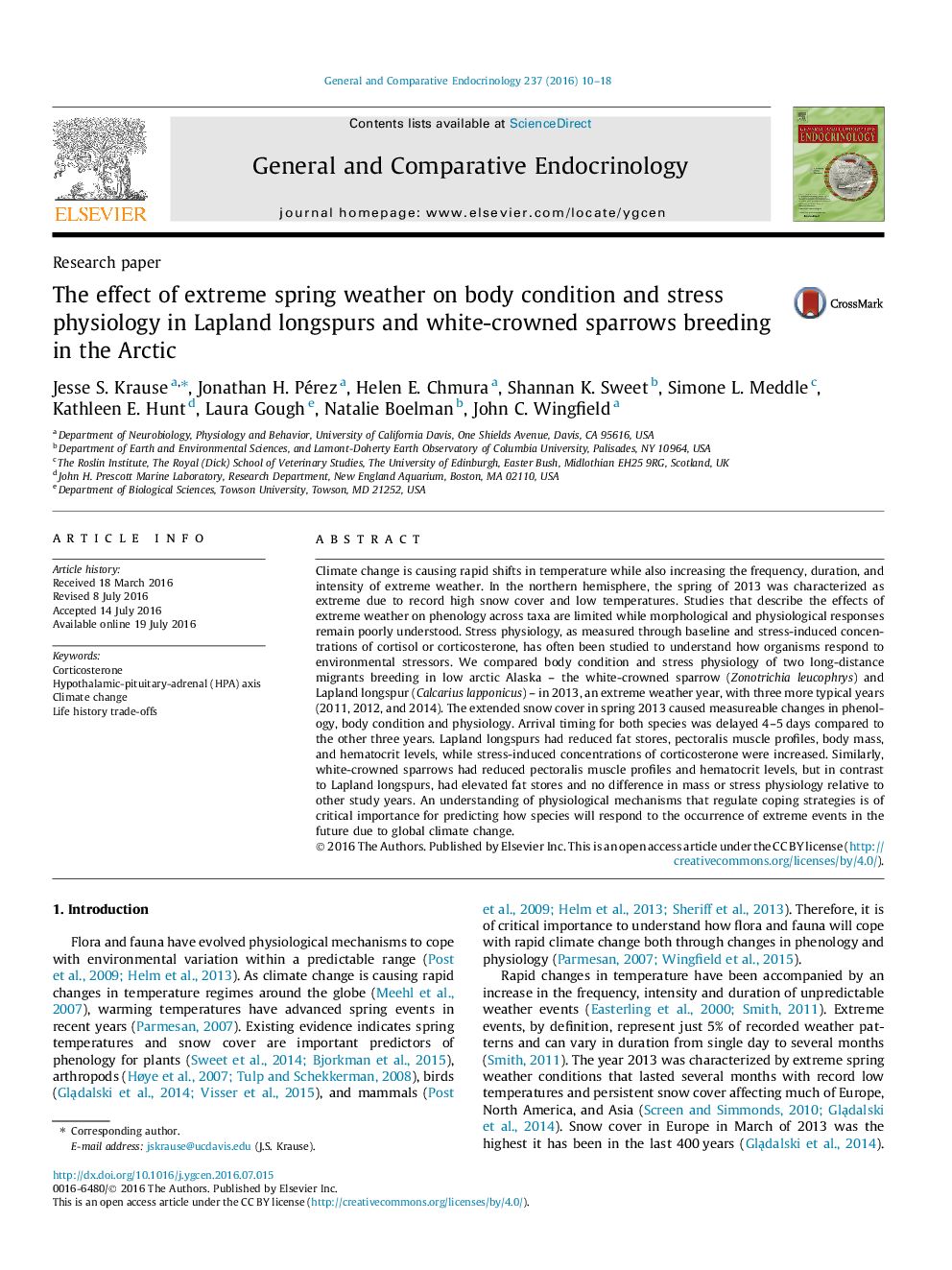| Article ID | Journal | Published Year | Pages | File Type |
|---|---|---|---|---|
| 5900716 | General and Comparative Endocrinology | 2016 | 9 Pages |
â¢The spring of 2013 was extreme with record low temperatures and snow cover.â¢Arrival of migrant birds in Arctic was significantly delayed in 2013 compared to 3 other years.â¢Body condition was negatively affected in white-crowned sparrows and Lapland longspurs.â¢Stress physiology was increased in Lapland longspurs but not white-crowned sparrows.â¢Extreme events have the capacity to affect phenology, body condition and stress physiology.
Climate change is causing rapid shifts in temperature while also increasing the frequency, duration, and intensity of extreme weather. In the northern hemisphere, the spring of 2013 was characterized as extreme due to record high snow cover and low temperatures. Studies that describe the effects of extreme weather on phenology across taxa are limited while morphological and physiological responses remain poorly understood. Stress physiology, as measured through baseline and stress-induced concentrations of cortisol or corticosterone, has often been studied to understand how organisms respond to environmental stressors. We compared body condition and stress physiology of two long-distance migrants breeding in low arctic Alaska - the white-crowned sparrow (Zonotrichia leucophrys) and Lapland longspur (Calcarius lapponicus) - in 2013, an extreme weather year, with three more typical years (2011, 2012, and 2014). The extended snow cover in spring 2013 caused measureable changes in phenology, body condition and physiology. Arrival timing for both species was delayed 4-5Â days compared to the other three years. Lapland longspurs had reduced fat stores, pectoralis muscle profiles, body mass, and hematocrit levels, while stress-induced concentrations of corticosterone were increased. Similarly, white-crowned sparrows had reduced pectoralis muscle profiles and hematocrit levels, but in contrast to Lapland longspurs, had elevated fat stores and no difference in mass or stress physiology relative to other study years. An understanding of physiological mechanisms that regulate coping strategies is of critical importance for predicting how species will respond to the occurrence of extreme events in the future due to global climate change.
